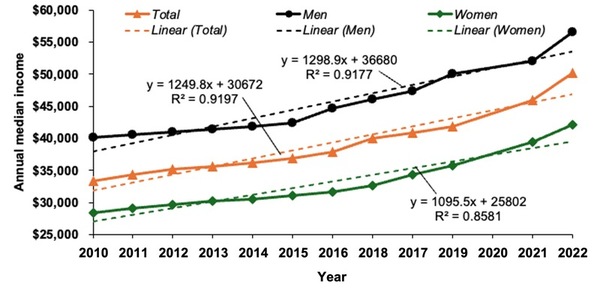Implication of education levels on gender wage gap across states in the United States and Puerto Rico
(1) Spring-Ford Area High School
https://doi.org/10.59720/24-108
The Gender Wage Gap (GWG) refers to the disparity in earnings between women and men, with women typically earning less than men for the same work. Recognizing the persistent challenge posed by this gap and the need for deeper investigation into its causes, we examined the relationship between education levels and the GWG among men, women and all adults in the United States (US) and Puerto Rico. We hypothesized that higher levels of education are likely associated with a lower GWG, whereas lower levels of education are more likely linked to a higher GWG. Utilizing data from 2010 to 2022, we analyzed trends in Annual Median Income and GWG dynamics across varying education levels. Based on data from all states, District of Columbia, and Puerto Rico, we uncovered significant disparities in GWG, highlighting an inverse correlation between education levels and GWG, where higher education is associated with reduced disparities. This underscores a potential relationship between education and wage disparities. By acknowledging the impact of education on GWG, policymakers can implement targeted strategies to close the gender gap in higher education, thereby promoting educational achievement and advancing socioeconomic standing. The results of our study highlight important implications for advancing gender equality, informing policy decisions and fostering a more equitable society through targeted interventions.
This article has been tagged with: